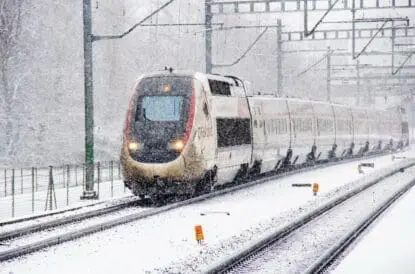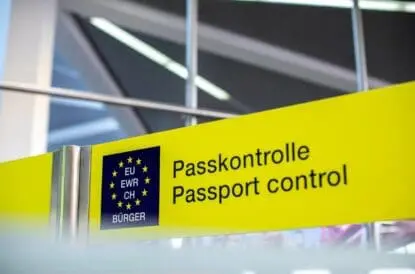The new Entry/Exit system is expected to launch from October 2025 – find out more below.
The new Entry/Exit System, or EES, will launch on 12 October 2025, and will change the border checks undertaken when you enter the European Union or Schengen Area.
EES Process
Fundamentally, there is no change to border procedures with EES; simply these procedures are handled by a computer terminal rather than a member of border staff. You do not need to prepare anything extra beforehand, nor pay any fees to engage with this system.
Upon arrival at EU and Schengen Area border controls, a self-service terminal will collect important information on your expected stay, including:
- Your passport details – recorded digitally from biometric passport data
- a picture – taken automatically by the terminal’s camera
- fingerprints – taken as instructed by the terminal
- Details of your visit – including number of days and how you expect to pay for your visit.
This will replace the need to have your passport stamped by a member of border staff.
The process will ask you a number of questions regarding the details of your visit – these are standard questions currently asked by border staff, including how much money you have to pay for your trip, if you hold appropriate insurance, and where you intend to stay. Please note the exact phrasing of these questions will vary by state.
This takes place at the EU border – note this may occur in the UK where controls are “juxtaposed”, such as at the Port of Dover or St Pancras International Eurostar Terminal.
The process is quick and easy, and once completed on first entry to a specific country will not have to be completed as thoroughly for three years. The EU is developing an app to further facilitate these repeat visits. The Republic of Ireland and Cyprus are currently exempt from the rollout of EES.
At the Port of Dover extra members of border staff, equipped with mobile terminals, will be on hand to efficiently complete EES requirements. In time, both Dover and St Pancras International expect to expand their border processing areas to better facilitate EES.
EES Roll-Out
The EU has confirmed that EES will be rolled out in over the course of six months from 12 October 2025. This means that you may experience a different border procedure if you pass through different ports or airports, even in the same country, whilst this phased roll-out takes place.
The Schengen Area
The Schengen Area includes the following countries:
- All 27 EU Countries, except Cyprus and the Republic of Ireland
- Norway
- Iceland
- Liechtenstein
- Switzerland
There are slight variations in how EES is being applied in each participant state. In some cases, UK nationals and other passport holders may be able to use passport e-gates upon arrival or departure – it is not yet understood how this will interact with the new EES system. A phased roll-out of the scheme will mean that you may experience a different border crossing experience passing through different border posts in the same country for a short time.
As a result of the UK-EU trade deal agreed in May 2025, UK passport holders will have the right to use passport E-Gates at all applicable ports, airports and stations; please note that not all border crossings have e-gate facilities. This will only take place once full roll out of EES has been achieved which is expected to be six months after its October 2025 launch.
EES Launch Date
EES will go live on 12 October 2025.
The EU has confirmed that EES will be rolled out in over the course of six months from its initial launch in October 2025. This means that you may experience a different border procedure if you pass through different ports or airports, even in the same country, whilst this phased roll-out takes place.
As a result of the UK-EU trade deal agreed in May 2025, UK passport holders will have the right to use passport E-Gates at all applicable ports, airports and stations; please note that not all border crossings have e-gate facilities. This will only take place once full roll out of EES has been achieved which is expected to be six months after its October 2025 launch.
Pre-Settled Residents
UK passport holders who hold “pre-settled status” in an EU country must present dedicated paperwork when crossing the Schengen Area border following the launch of EES. Please note this varies between countries; the specific requirements can be found on each country’s FCDO travel advice page here.
Summary
Be prepared when travelling to the EU and Schengen Area from 2025:
- EES is designed to replace passport stamps from its rollout
- Ireland and Cyprus are exempt from EES rollout
- EES can be quicker than manual passport checks
- Rollout will be in phases over a six month period, so border procedures may differ between borders even in the same country during this period






